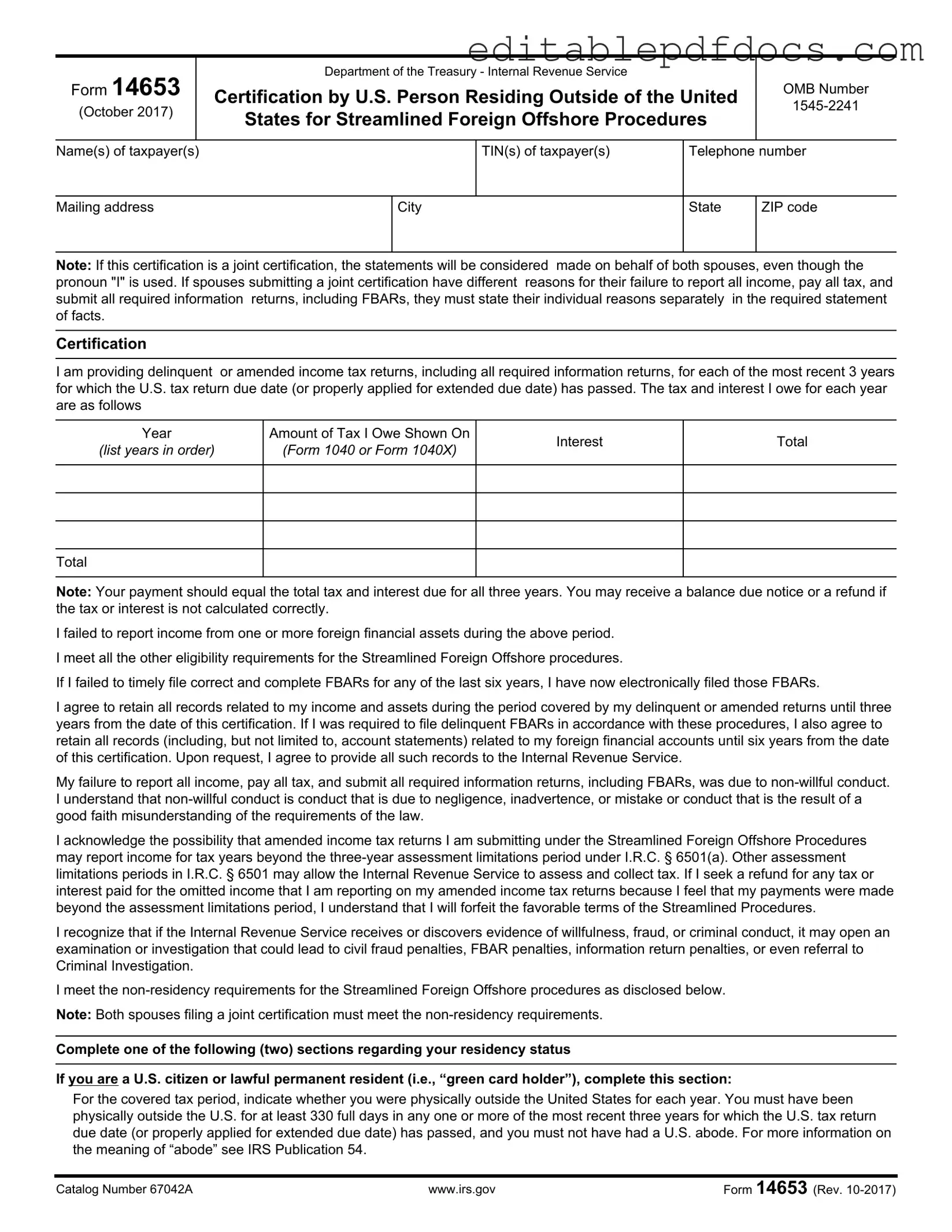When completing Form 14653, individuals often make several common mistakes that can affect the processing of their submission. One frequent error is failing to provide complete taxpayer information. Each taxpayer must include their name, Tax Identification Number (TIN), and contact details. Incomplete or incorrect information can lead to delays or rejections of the form.
Another mistake involves not disclosing all required facts about income and foreign financial accounts. The form requires a detailed statement explaining any failures to report income or submit necessary information returns. If this narrative is missing or lacks sufficient detail, the submission may be deemed incomplete, which could disqualify the applicant from the Streamlined Foreign Offshore Procedures.
Many individuals also overlook the importance of providing specific residency information. For U.S. citizens and lawful permanent residents, it is crucial to confirm whether they were physically outside the United States for at least 330 days during the relevant tax years. Not answering this question accurately can result in an invalid submission.
Additionally, failing to calculate tax and interest owed correctly is a significant error. The total amount due must be clearly listed for each tax year. If the figures do not match the attached returns or are inaccurately calculated, this discrepancy can lead to further complications with the IRS.
Some applicants neglect to include their reasons for failing to report income. The form requires individuals to explain their non-willful conduct. Without a clear explanation of the circumstances, including any reliance on professional advice, the IRS may not grant the requested relief.
Joint filers often make the mistake of not coordinating their statements. If spouses have different reasons for their failures, they must provide individual explanations. Failing to do so can result in confusion and may hinder the approval of the joint certification.
Another common issue is not retaining the required records. Taxpayers must keep all relevant documentation for three years from the date of certification. If the IRS requests these records and they are not available, it may lead to penalties or further investigations.
Moreover, some individuals do not realize the implications of reporting income beyond the three-year assessment limitations period. Those seeking refunds for such income may lose the benefits of the Streamlined Procedures. Understanding these limitations is essential to avoid unexpected consequences.
Finally, failing to sign the form correctly is a simple yet critical mistake. Each taxpayer must sign and date the form, and if it is a joint certification, both spouses must provide their signatures. Omitting a signature can result in the form being considered invalid, delaying the entire process.
